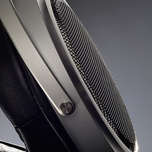Retained
-
Member Title
Newbie
Personal Information
-
Location
Richmond, VA
Recent Profile Visitors
The recent visitors block is disabled and is not being shown to other users.
-

NAS Newbie needs recommendation
Rushton replied to Musicophile's topic in Disk Storage / Music Library Storage
A good discussion all around. Clearly we've all found different solutions, with the key being backup, backup, backup. We all know to assume that every drive will fail at some point, so the question is "How do we prefer to recover from the drive failure?" One and a Half raises a serious concern that I've had: failure of the NAS controller that wipes out the entire array. It happens. I'd rather it not happen with my data so I'm choosing the multiple redundant external drives. No common failure point, backups not connected to the network or to power. Is it a bit more burdensome to maintain? Hmmmm..., not sure about that. Good to have a this wide-ranging discussion of alternatives and considerations. Thanks to everyone who has been contributing! -

NAS Newbie needs recommendation
Rushton replied to Musicophile's topic in Disk Storage / Music Library Storage
Interesting discussion and timely for me. I got the same advice that Diecaster shared from an audiophile friend who is a systems administrator for a major bank: keep it simple, don't use a NAS. He maintains over 20TB of music and video data in his library. But he doesn't use a NAS. Instead, he uses multiple external USB hard drives attached to a NUC on a powered USB hub. He backs each primary drive up to a second drive, also an external USB drive. Once a primary drive is filled over time to about 80%, he stops adding data to it. He adds a new drive to his hub and starts putting any new data on that new drive. The filled drive gets "locked down" from further data changes. The new drive also gets its own dedicated backup drive. Since the filled primary drives are rarely modified after being filled, the backup drives are simply "cold storage" copies of the primary. The backup can remain in cold storage, disconnected and unpowered, until there is some reason to power them up (like running a diagnostic to see how the magnetic encoding is holding up over time or if some intentional editing is done to the data on a "filled" drive). This seemed simple, logical and eminently practical to me - so I'm following his advice. Since the backup drives are disconnected and off-line, they are not exposed to risk of electrical surges and experience very-little-to-no physical wear and tear. Should there be a third backup drive for each primary that can be placed off-site? Probably.



